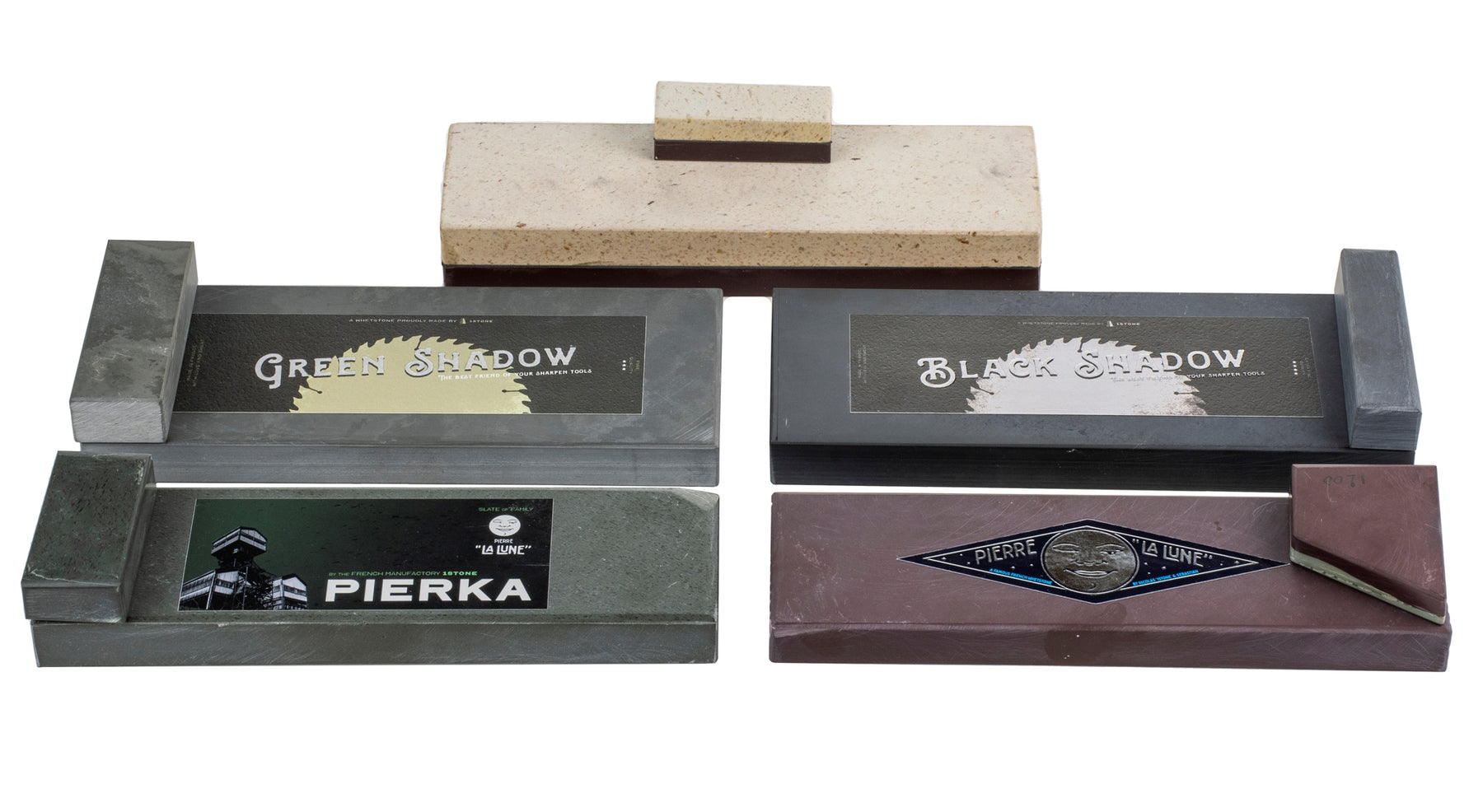Introducing 1Stone

Introducing Natural Stones from 1Stone
We're excited to offer natural whetstones direct from 1Stone, a maker of sharpening stones in the Ardennes region of France. 1Stone is run by a gentleman named Nicolas Rollin who is reviving the manufacture of natural whetstones that have been out of production for some time, as well as bringing new stones to market.
These European stones were new to us, but now that we've tried them, we see the appeal. The feel of sharpening with them is unique, they're frankly beautiful stones in their own right, and most importantly they give a sharp edge. Sharpening with these stones brings to mind traditions long dormant and is a thoroughly enjoyable experience.
These are Refining and Finishing Stones

These are perfect for straight razor sharpening.
These natural whetstones are fine grit and are used for finishing and maintaining sharp edges. These are not stones to use for hogging off material to create an edge on an extremely dull blade. They are wonderful for finishing an edge after using coarser methods, or for sharpening an edge that is a bit dull, but not yet a butter knife.
Each Stone includes a Dressing Stone

Creating a slurry is easily done with the included dressing stone.
Sharpening with these stones is done by creating a slurry with water or oil, and then progressively thinning that slurry to get finer and finer results. The best way to get a slurry is by rubbing a smaller piece of the same stone against the whetstone. This smaller stone goes by many different names, such as dressing stone, slurry stone, nagura, bout, and others as well. Whatever you call it, each 1Stone Natural Whetstone comes with a smaller piece of the same stone for use in creating a slurry.
We're Introducing Five Stones
We've chosen five stones from 1Stone. These stones show the range of the 1Stone line and include a revived brand name stone that had been out of production as well as stones new to the market.
La Lune

The La Lune is in the 6000 plus grit range.
The La Lune is a dark red stone with a smooth, hard feel to the fingertip and can contain inclusions of lighter color. The La Lune compares to a water stone of about 6000 plus grit, does not absorb a great deal of water, gives great feedback, and makes a satisfying sound when moving a blade over it.
The La Lune historically was a popular European sharpening stone. 1Stone has revived this once common whetstone.
The Imanishi Amakusa / La Lune Combination Stone

The Imanishi Amakusa / La Lune Combination Stone couples a natural Japanese water stone with a European La Lune.
The Imanishi Amakusa / La Lune Combination Stone is a natural Japanese stone affixed to a natural La Lune European stone. The resulting combination stone is versatile and enjoyable to use. The Japanese Imanishi Amakusa is in the 1000 grit range and is typically used first while the European La Lune at 6000 plus git is a refining and finishing stone.
The Pierka

The Pierka is in the 8000 plus grit range.
The Pierka compares to a water stone of about 8000 grit. This dark greenish gray stone has a smooth, hard feel to the fingertip and visible open pores resembling wood grain in appearance. When held loosely and gently tapped, it makes an almost ringing sound. This stone does not absorb a great deal of water, has good feedback, and produces a fine finish and a smooth cutting edge.
The Green Shadow

The Green Shadow is a high grit finishing stone.
The Green Shadow compares to a water stone of about 10,000 grit. This dark green-gray stone has a smooth, hard feel to the fingertip and can have a mottled appearance. This stone does not absorb a great deal of water, is finer than the Pierka or the La Lune stones and has a little bit of grab during use. The Green Shadow leaves a fine polish and a razor edge.
The Black Shadow

With the Black Shadow is the highest grit of the new European whetstones.
The Black Shadow compares to a water stone of about 10,000 - 12,000 grit. This black stone has a smooth, hard feel to the fingertip and can have a mottled gray-black appearance. It does not absorb a great deal of water and is slightly harder and finer than the Green Shadow. Nicolas recommends it especially for finishing razors and knives. The Black Shadow leaves a fine polish and a smooth razor edge.



